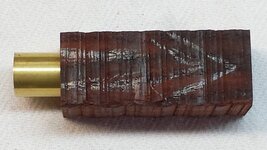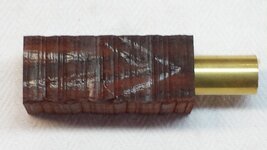After drilling a cocobolo blank with a 12.5mm drill bit, the tube will slide in about 1/2 way from one end and about 3/4 way from the opposite end. Since 12.5mm is a fairly large bit, I first drilled with a 7mm bit and chased that with a 3/8" bit and ended with the 12.5mm bit. This is the second cocobolo blank I have had the same problem with. After a round file around the inside of the blank the tube slides in fine. This afternoon I drilled another hardwood blank using the same process and the tube slipped in perfectly.
Any ideas????
Any ideas????


